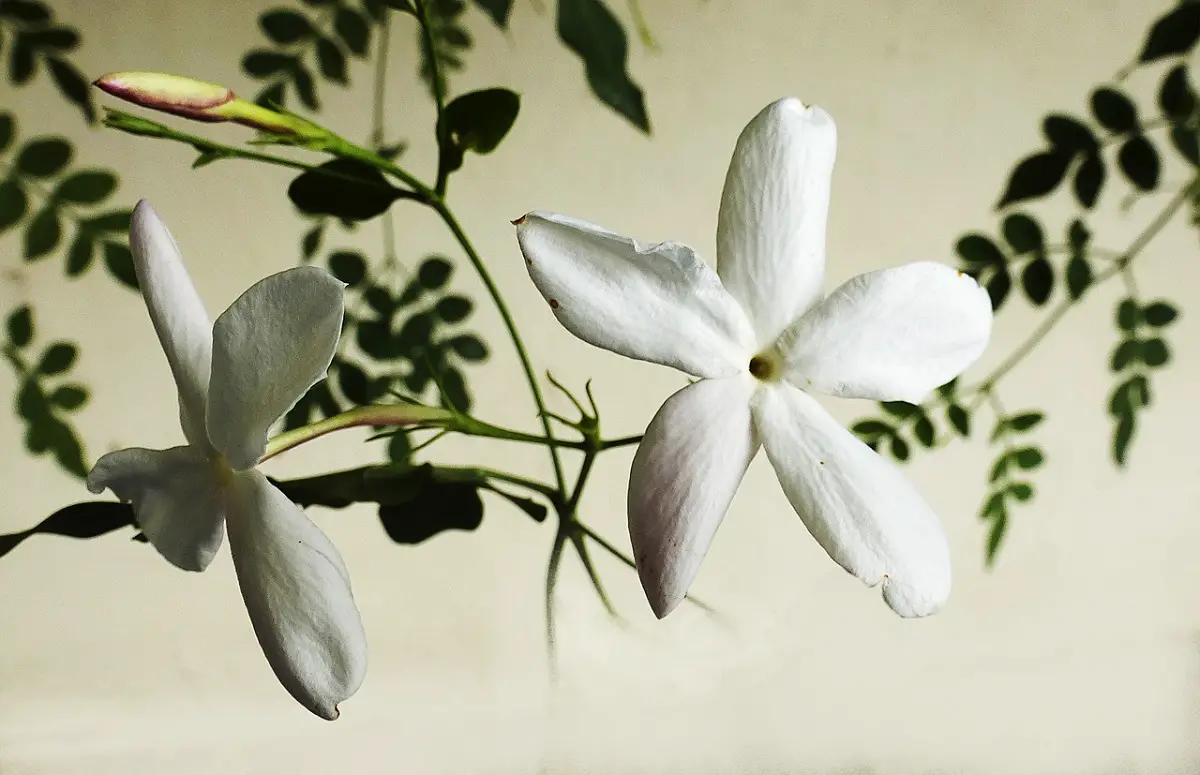
There are many species of jasmine, so some plants are suitable for growing in pots and indoors, while others will be better outdoors. Unless you enjoy a mild winter climate, jasmines are typically grown in pots to keep them frost-free in winter.as in a covered terrace or in the interiors of the houses.
Jasmine is well known for its highly fragrant white flowers. But this climbing plant is also available according to its species in yellow flowers or in pink flowers, one of them blooms even in winter and resists very well to very negative temperatures, another has persistent green foliage. Drained soil is required to ensure a good planting. To plant the jasmine it is advisable to do it in spring.
Where to plant jasmine?
In the sun and partial shade. However, keep in mind that a lack of sunlight can prevent the plant from blooming. Choose a warm place that is well protected from the wind. Most species of jasmine, including the Jasmine officinalis, the best known species, it is sensitive to cold and does not survive temperatures below -10 ° C.
- Exhibition: Jasmine likes warm, sunny locations, but tolerates semi-shady areas in temperate climates. An exposure to the south or west should be privileged. Also place it away from cold winds.
- Ground: appreciates rich soil, cool in summer, but well drained. Once installed, it supports long periods of drought in summer.
When to plant jasmine
Plant them in spring, as soon as the risk of frost has been ruled out, from April to June depending on the weather. In a temperate climate, it can also be done in early fall, between September and October.
- In spring, from the end of March in warm or temperate regions.
- In April, May for colder regions.
- In September and October before winter.
How to plant it in the ground?

Most jasmine plants are quite fragile, particularly sensitive to cold. That is why it is important to install them in a place sheltered from cold winds. If necessary, protect them during the winter with a frost blanket. These are greedy plants that require rich soil. Make a good supply of organic compost when planting jasmine, and repeat the operation during the two or three winters after planting.
Although they are often considered shrubs, most jasmine are climbing plants. It is important to support them so that they develop easily. A trellis, a fence or even a dead tree will fulfill this role very well. Choose the right variety, try Jasmine officinale is one of the most resistant fragrant species. There are several varieties: ‘Affinis’, with powerfully scented flowers; ‘Aureum’ with beautiful golden foliage; ‘Argentovariegatum’, with variegated white leaves. The latter is a bit less rustic.
Prepare the soil
- Dig to the depth of a shovel and 50 cm wide.
- Put some pebbles or gravel at the bottom to improve soil drainage.
- Add a 50/50 mixture of mature compost and potting soil.
Prepare the jasmine:
- It is usually sold in a pot and can already measure more or less 1 meter.
- Remove it from the pot carefully, without breaking the roots.
- Soak it in a bucket of water.
Add the jasmine.
- Jasmine should be near a fence, a pergola, a trellis …
- Attach it, for example by tying the stems with zip ties.
- Fill in the gaps with compost and potting mix.
- Flatten well with your foot: be careful not to damage the roots, especially at the base of the stem.
How to plant jasmine in a pot?

If you live in a place with harsh winter weather where frosts are frequent, the best thing to do is to plant your jasmine in pots and indoors. You can expose the jasmine outdoors, in sunny or partial shade, during spring and summer and then remove the pot in a sheltered place in autumn and winter.
You should pay attention to both cold drafts and excessive sun exposure. Even to place a pot of jasmine in the garden, choose the location very carefully, so that the plant is not exposed to the wind or the scorching sun. Choose a natural soil suitable for flowering plants or give preference directly to the soil in your garden if you have it available.. You can add sand to the soil in their pots to improve drainage.
Water the jasmine frequently so that the soil surface remains constantly moist.. Pot-grown jasmine should be transplanted once a year. Transplantation is carried out in September for spring-blooming jasmine and early spring so that the plant blooms in winter.
Jasmine preparation
- Choose a container that is perforated in the bottom and large (at least 30 inches high and wide) because its rooting is vigorous.
- Place the root ball in a bucket of water to rehydrate it.
- Place clay balls in the bottom and cover them with a blanket to prevent compost from blocking the drainage holes during watering.
- Use a universal plant growing medium or good soil with coarse sand or perlite.
- Place the jasmine and its stake and fill with the substrate.
- Water generously and allow the plant to acclimate.
Care after planting jasmine
- It is necessary to water generously during flowering.
- Protect cold-sensitive jasmine during winter with a frost-proof cloth.
- Prune your jasmine in winter after it blooms. Old twigs must be removed.
- These species only need to be pruned once every 3-4 years to rebalance the plant. For these species, too frequent pruning reduces flowering.
